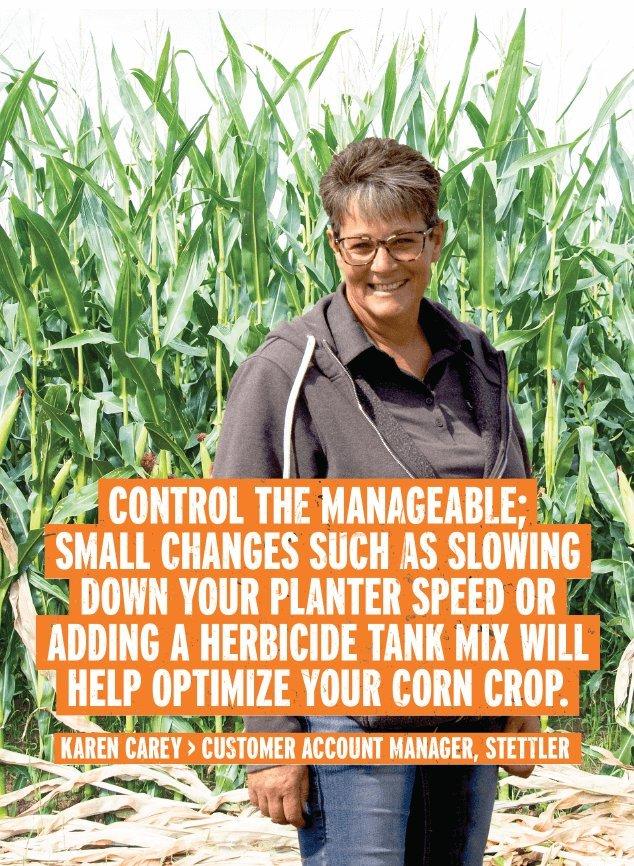FOUR AGRONOMIC DRIVERS FOR SUCCESSFUL CORN PRODUCTION
Corn can be a challenge to grow. It needs everything to be just right to maximize yield potential. Here are four key agronomic drivers to keep in mind.
1. Seedbed preparation. Because a lot of heavy equipment is used to harvest silage corn, there's usually a lot of trash and compaction in that field. A deep rip in the fall (disc ripper with 18-inch tines) breaks that compaction allowing soils to warm more quickly the following spring and encourage better corn root development. Done regularly, deep ripping will contribute to better corn yields.
2. PLANT IT RIGHT. Watch your speed and depth.
Speed. No more than 4 to 4.5 mph. It comes down to the hysics of your planter. Curved drop tubes are designed to perfectly place corn seed at this speed. Go faster and seeds start bouncing, and you'll lose those perfect "picket fence" crop rows.
Depth. To build brace roots properly, seed no more than 1 to 1.5 inches deep. If you go deeper, you'll still get brace roots, but you'll also have uneven emergence and delayed development because plants use their energy to get out of the ground rather than produce leaves.
3. SPRAY IT RIGHT. Weed control is the major focus as corn is a terrible competitor. Weed competition at any stage will delay maturity so get them out. Here's what you should do:
Start clean. Use a pre-seed herbicide, there are many to choose from, to clean fields before you seed.
Spray twice more. Apply herbicide in early June, when the crop is showing two to three leaf tips, to get that first flush of weeds out. Spray again in late June when the corn is about 10 inches tall just before the rows close. Two mid-season sprays can boost yields by up to 15%, so it's worth the effort.

Use the right tank mix partners. Two factors to consider are: volunteer herbicide-tolerant canola (it's everywhere), and other herbicide-tolerant weeds, particularly glyphosate-resistant kochia. Know your field history, scout your fields properly to assess what weeds are actually there and choose the tank mix partner best suited to control them.
4. MEET WATER REQUIREMENTS. Peak water use for corn is from the last week of July through the first two weeks of August when corn is at the beginning of its reproductive stage. At this point, it needs 6mm to 7mm of water per day.
Timing matters. If you irrigate corn, watch your timing. Two inches of water in May will perk it up, but it will also cause corn to crown too early